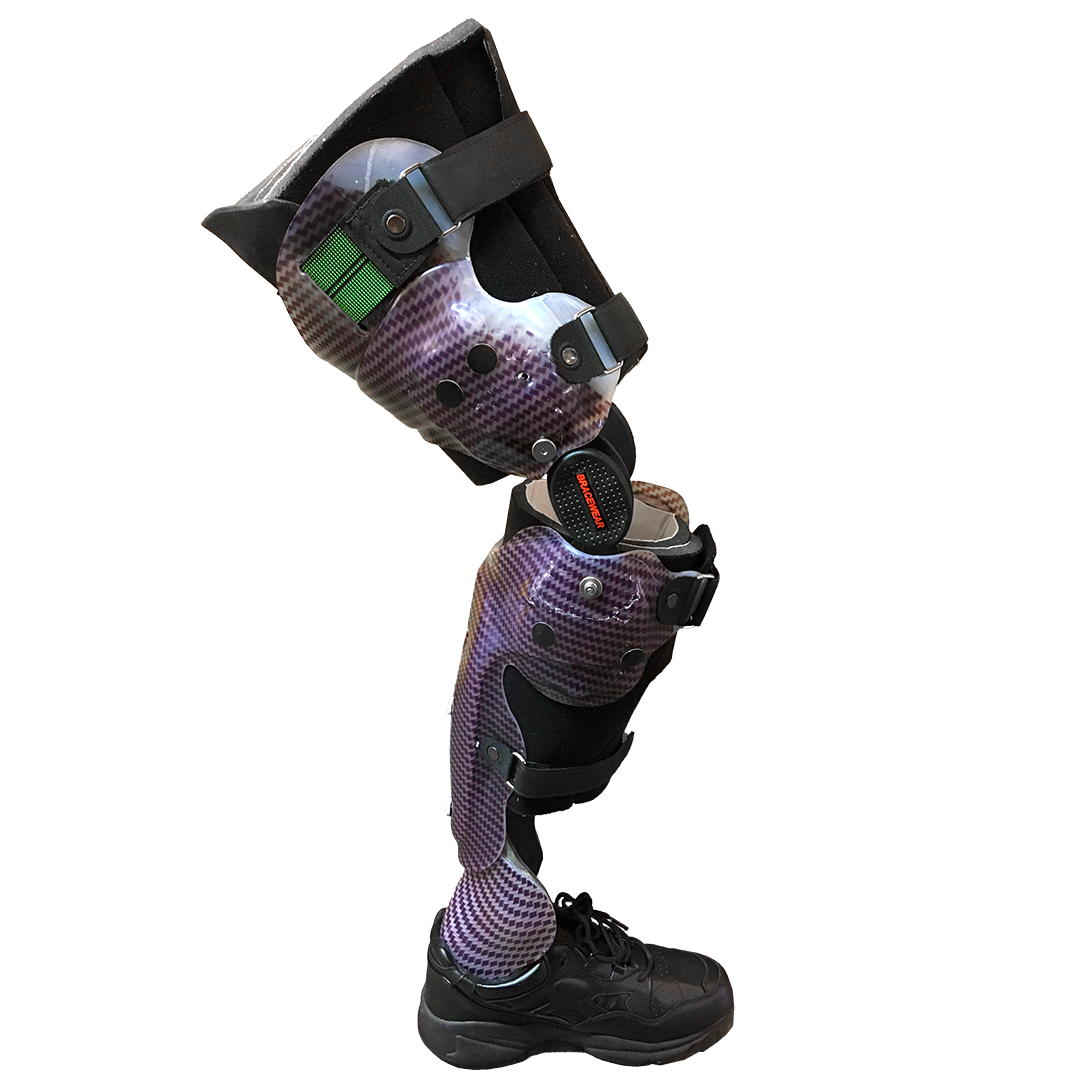

grade 7 solution may be suitable for individuals with:
- Significant knee and ankle instability, deformity or paralysis due to trauma or pathology who require functional control
- A need for a carefully planned, activity specific device designed by a multidisciplinary team
grade 7 prescription options
A grade 7 solution extends above the knee to provide maximum control and stability of the limb
- Cast is modified as specified and can include areas of relief and areas of increased loading to achieve the desired outcome
- The device can be fabricated out of one or multiple layers of foam, plastics or carbon fibre
- A range of joints can be moulded into the device at the ankle and knee to meet patient weight, support, stability, and energy return requirements
- Additional padding, wedging, and straps using a range of materials
- Walking sole or fit in standard footwear
Orthosis Creation Process:
- A (negative) cast is taken of the patients upper leg, lower leg and foot
- The cast is filled to create a positive mould of the patients limb. This cast is modified as per the clinicians request to unload bony prominences and areas of concern and load where possible
- The cast is prepared for moulding and placements of joints and reinforcement are located if applicable
- Layers of plastic and foam are individually heated and vacuum formed to form a device
- Appropriate padding and straps are added as per the clinicians request
- Quality checked and dispatched to either the patient or clinician for fitting
grade 7 clinical result:
Why Orthotics Matters
Patient presented with a fractured femur and a severed femoral nerve. The long-term objective was to get the patient back on their feet and be able to return to work.
A clinical Orthotic plan was crafted with other g20 team members. The initial solution was an AFO that served to aid with weight bearing and wound protection, post-surgery. With a knee brace and simple dorsal flexion device.
12 months on, another review with the patient resulted in the decision that the femoral nerve was not recovering. This meant that there was the principal issue of knee instability and a failure to dorsiflex the foot remained.
After the complete review, the patient was fitted with a complete plastic KAFO featuring a dynamic global in-section and computer-controlled knee stability device. This allowed the patient to reclaim some fundamental movement patterns within the limb – this resulting in the patient continuing to work and maintain their primary source of income and activities of daily living.